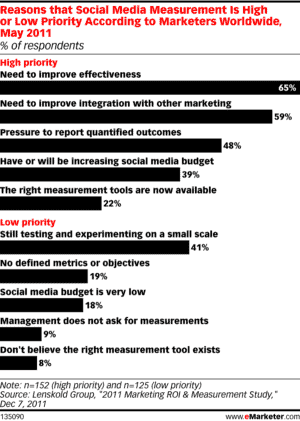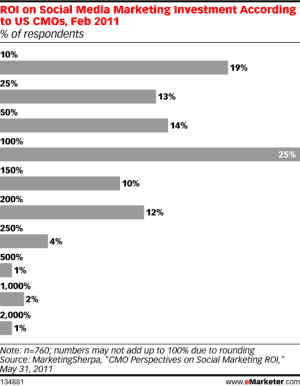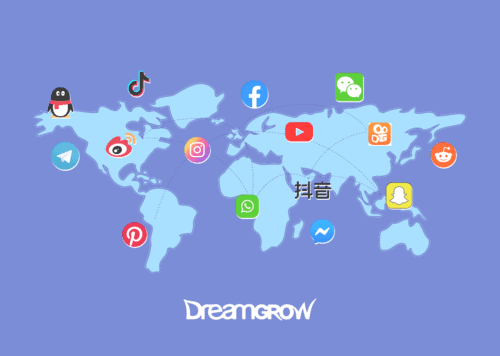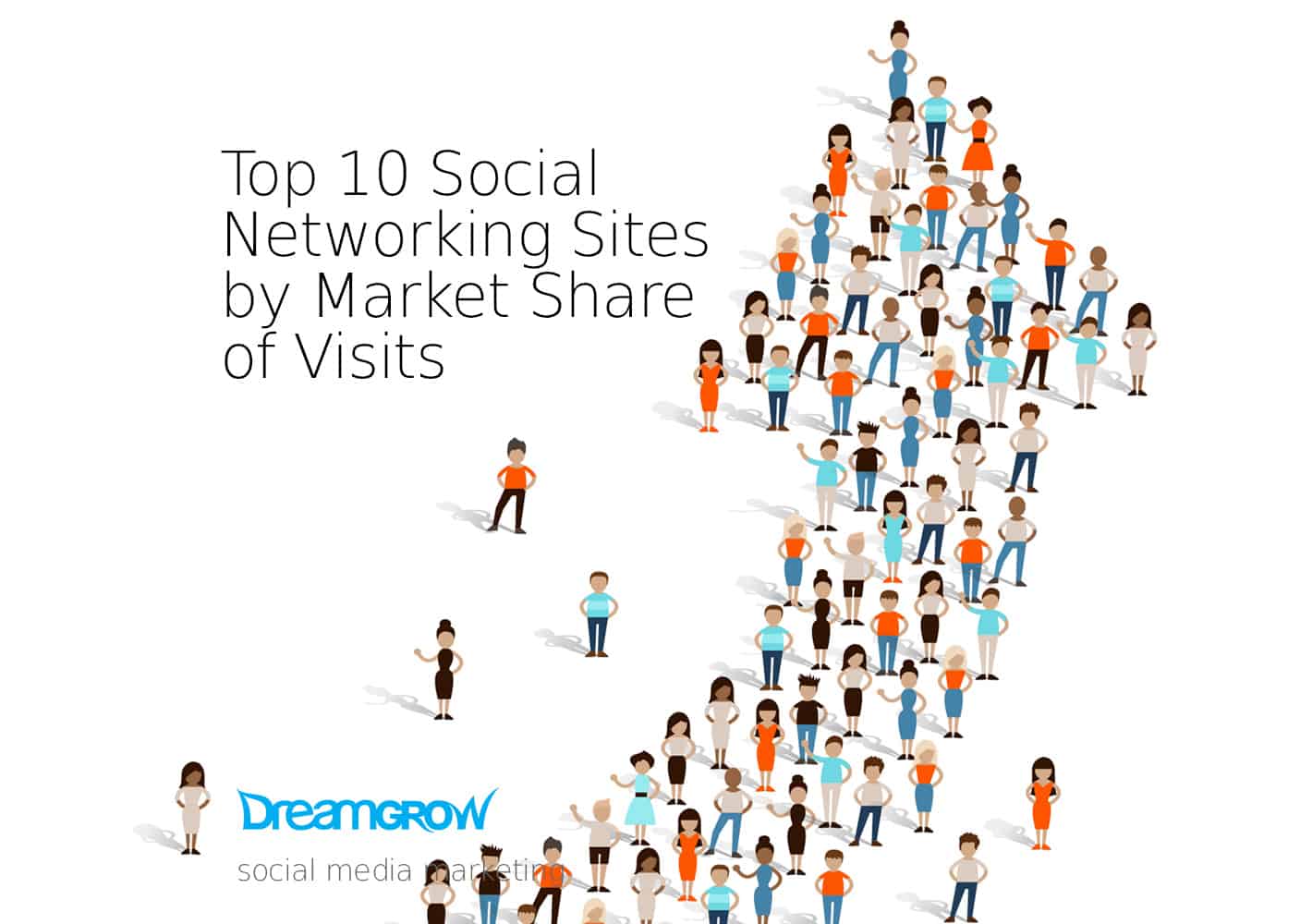
You can find the first and second part of the interviews here: Are Your Marketing Efforts Really Aligned? World’s Leading Experts Answer.
The questions are preceded by my initials KCP, Kelli-Carolin Parkja, and the experts’ answers are indicated with their names. To contact me, write to me on Twitter @kellicarolin
The interviewees:
- Andrea Colaianni, Social Media Consulting Director, SAME SAME Agency,
- David Meerman Scott, Marketing and Leadership Strategist,
- Jay Baer, Social Media Strategist at Convince and Convert,
- Jen McClure, Senior Director, Social Media Strategist at Thomson Reuters,
- Michael Hopps, Social Media Specialist at Cisco Systems and
- Peter Kim, Chief Strategy Officer at DachisGroup.
KCP: What are the industry standards that you know of, that exist in measuring social media ROI, and do you follow them?
Andrea Colaianni: I think that some time ago we did not really care about what to measure and we did not focus on what really needed to be measured. For example, on Facebook, everybody was focusing on how many fans and how many followers they had. But that was a mistake, because today we know that in general, from 1 million fans, just 1% are interacting with the brand. So we need to focus on these people that are interacting with the brand. But we also have to understand how to engage the other part that is not interacting. This is a way to measure the ROI. We need to understand, how people have been helped by social media in terms of customer relationship management. We have to measure, how many ideas are generated, how many positive interactions or negative interactions there are and how many of these negative interactions we transform into positive ones. Today, the only part that is really well developed in terms of social media usage by businesses, is the reputation part. We still have to improve and work on the innovation and customer relationship parts.
David Meerman Scott: Like I said earlier, I see many people making a terrible mistake. They make a big mistake when they take offline measurement tools and offline measurement calculations and try to apply these to the online world. I think it is important for people to understand that what somebody considers an industry standard or what somebody says is a best practice can be completely wrong, because one might be measuring the wrong things. When you are trying to measure the number of sales leads, which many companies do, then you are simply measuring the wrong things and that ends up driving you to do things that don't make any sense in the world of online marketing today.
Jay Baer: One of the things that makes it difficult is that to create an actual ROI calculation, you have to pull numbers from different places. You cannot just go to Facebook and ask them for your ROI, it does not work like that. You have to actually do maths and do the work and a lot of people do not want to put in that effort or do not know how to do it. The other challenge is that depending on why you are involved in social media as an organisation, ROI may not be the best metric for you. If you are going to use social media primarily for awareness building, you might want to measure awareness today versus awareness down the road. If you want to use social media for loyalty and to get customers to buy from you again and again, you might want to measure something like customer yield, customer churn, customer advocacy, which may again not be best expressed in ROI. So the challenge is that people use social media for a lot of different strategic objectives and each of those carries with it its own set of metrics. But people want one answer and there isn´t only one answer, and that is what makes it hard.
KCP: What are the industry standards that you know of, that exist in measuring social media ROI, and do you follow them?
Jen McClure: It is just developing. We are seeing companies that are trying to make that connection. Salesforce is trying to make that connection with this acquisition that will increasingly bring social data into customer data. Having LinkedIn for Salesforce is to tie social data and customer data together. There are a lot of companies focusing on how we take these social signals and we bring them into platforms that we use every day that are large enterprise platforms. That is just beginning. The real acquisition by Salesforce was only last year, so to really tie Radian6 data into Salesforce, even there the connecting points are not there yet within the solution. They are owned by the same company, but the solutions to tie that data nicely together are still in a very early stage.
Note: at the request of Jen McClure and Michael Hopps, the author points out that the answers by these two experts do not reflect the answers of their current employers but are based on their professional experience.
Michael Hopps: On a large scale across other companies, I would refer back to my response for earlier question. But one also needs to keep in mind that social media is new to a lot of companies. These enterprises place it either at a very high priority scale or at a very low priority scale. A lot of companies see it as a new evolving media, so they are not even tracking ROI or they are not even tracking any sort of metrics. So while most enterprises are tracking some sort of metrics, an industry-wide ROI formula is still a very complex metric to develop. Our CMO at Cisco has done a very good job when it comes to working with ROI in terms of social media marketing investment. I would stress that while the new adopters remain a bit hesitant in continuously increasing their social media investments, a handful of companies are ensuring that their social media ROI goals are being met.


Michael Hopps: In another example from eMarketer, it can be noted that 25% of CMOs in the U.S. say that they have “received 100% ROI on Social Media Marketing investments”.
Note: at the request of Jen McClure and Michael Hopps, the author points out that the answers by these two experts do not reflect the answers of their current employers but are based on their professional experience.
KCP: What are the industry standards that you know of, that exist in measuring social media ROI, and do you follow them?
Peter Kim: Having been in the business since 1995/1996, I can say is that it´s been difficult at best to measure marketing. Most commonly, much marketing and branding activity is not measured at all. When you look at operations and supply chain, for example, 6 Sigma financial measurement.
In the United States we have the Sarbanes-Oxley act, for example, with a lot of corporate scandals and corruption there has been legislation that require companies to report financial results on a much stricter basis. In case of things like supply-chain, that can be operationalized, measured, or things like IT. When you talk to a CEO or a CTO, any sort of investment has to be justified with a business case or a business model, they ask for a five year pay-back. When you talk to a CMO about a branding and advertising campaign, that rigour in terms of analysis is just not the same, you do not have the same demands. You are not being asked to show a five year business case, a pay-back in terms of average cost per user. It does not happen yet in marketing. But of course there are sophisticated techniques like marketing-mix modeling, correlative measurement and science of quantitative analysis, that are used in marketing, it is not just “flying out there” without any measurement. When we talk about social, there is certainly a lack of standard, a lack of measurement being applied.
KCP: What are the most common mistakes that one can make in measuring the ROI of social media?
Andrea Colaianni: People are trying to find a way to measure the ROI of social media, but it is a big mistake. Because today, the economy is no the same as 50 years ago. At those times, when a person got a message, the company knew how much money they could have back from him. Today, communication means giving substantial importance to the engagement, to the corporate reputation, and to the brand reputation. Trying to measure the ROI is like thinking in a different kind of a funnel. Today the funnel is liquid, so the ROI is more like a ROE – return on engagement more than return on investment. We have to find the main elements to measure social media – what engagement is and what really is influencing the client-side behaviour.
David Meerman Scott: Too many people in their online channel insist on requiring email addresses for their content and other ways of registration in order to generate so-called sales leads in their online marketing. That is a terrible mistake, because it means that you are actively discouraging people. You are actively saying to them,”I don't want you to download my stuff,“ because you are requiring their email address.
People confuse audience with results. – Jay Baer
Jay Baer: People put too much stock into the number of followers, the number of fans and the number of likes and things like that. People confuse audience with results. Just because I have 55 000 Twitter followers, doesn’t mean that 55000 people see everything I tweet or that they click on everything I tweet, and it doesn’t meant that 55000 people then conduct some sort of behaviour that makes me money. The number of fans, likes and followers that you have, is perhaps the most overrated metrics in the business because there is no linear relationship between number of fans and behaviour. We need to focus a lot more on behaviour and lot less on just counting fans. As a general rule, if a metric counts up from 1 to whatever, it's probably not a great measure. If it's a ratio or a percentage, it's probably better because it's behavior-based.
Jen McClure: It is very easy to just look at follower numbers and that is primarily what people have relied on. I think relying on Klout numbers is a mistake because it is a very confusing algorithm and it´s also only part of the story. When people look at that and say that is influence, then that is missing something. Looking at just the quantitative as opposed to the qualitative, it is much easier to look at. For example to say,“we have 2000 mentions around our brand“ then what do those really consist of? That automated sentiment is very misleading. Positive-neutral-negative type of sentiment ratings aren't helpful, because most things would fall into the neutral category and that does not mean anything. Unless you're taking the time to really read and add your own assessment on top of that, you really cannot just automate your understanding of the ROI. You have to take your time and dig in and figure out what is the return that you are looking for, what is the investment that you are making. A lot of these tools are free tools, but they are not free, because you are investing so much time in human resources. You have to start with thinking,“what is my R and what is my I?“ and then, what are the tools sets that allow me to measure that?“. That is kind of hard. I don´t think that people properly assess the amount of I in terms of the human resources that we have to put into these tools to make our social media initiatives successful. That can be challenging.
Michael Hopps: Once again I would like to emphasize my response to earlier question, which involves a tunnel-vision focus on the matter. Only focusing on quantitative metrics, i.e. likes, fans and followers, is a common mistake. One cannot neglect qualitative reporting – incorporating an analysis of emotional attributes, of sentiments, for example, is also very important. This incorporation complements customer satisfaction and customer engagement in addition to click-through rates and conversion rates and so forth. Qualitative complements quantitative metrics, that is an important concept to keep in mind.
Peter Kim: I would like to bring in a comparison with playing golf – it is like swinging a golf club. When you hold the club too loose, it will fly away. When you hold the club too tight, you are too rigid in your swing, you hit the ball and it will maybe hook or slice. That is what a lot of beginners do, they think that the tighter they swing, the better it will be, and that is not the case at all. The analogy with social media measurement is that it should not be without any measurement but on the other hand it should not be over-measured either. Making social media as accountable as search marketing, for example, counting every click and trying to force too much granularity, is a mistake as well. We can measure it but let's try not to be too exact about it, because there are issues like multi-channel modelling, that need come into the play. So there is an in-between – it can be measured but we should not expect too much from social media measurement.
KCP: Comparing this measurement to golf, is it practice and experiment also and trying to get the “feel “of it, every company needs to find their own way?
Peter Kim: As you start to play, you understand your particular stand or swing. Companies need to create their own baseline. It happens a lot in traditional marketing in questioning what is one's return on a client. It depends on whether you are advertising auto-mobiles or mobile handsets or candy-bars, it can be different value propositions. It is the same thing in social media – practice, create a baseline, understand what you are seeing and then how the tactics generate on top of that.
Practice, create a baseline, understand what you are seeing and then how the tactics generate on top of that. – Peter Kim
KCP: What has proven to be the most efficient social media metrics and why?
Andrea Colaianni: First of all, what needs to be emphasized is that metrics depend on the platform that you are using. It is not the same thing to measure engagement on Facebook, on Twitter, on Youtube and on any other platform. The important thing is to define the metrics and before that, to define the key performance indicators (KPIs). This means that you have to have an objective, you need to understand and know, why are you on Facebook or why are you on Twitter or why do you create your own social network. By defining the objective, you can then define the KPIs and the metrics to measure. There is not only one answer to this question. You have to know why are you doing something.
David Meerman Scott: There are metrics to define how many people are interacting with your content and where you appear in the search results, and those are very important metrics to look at. Ultimately, the most important metric is how well your company is doing. That means to look at whether you are making sales and whether your market share is growing compared to the competition, and you can measure that too.
Jay Baer: Again, it depends on what is your strategy and what you are trying to accomplish. In general, I think click-through rates are the most efficient metrics. If you put a piece of content out in the social media, whether its Twitter, Facebook, LinkedIn or another place, then it is the number of people or the ratio of people, who actually click on that link and get started on some sort of a journey. I think that is probably the best metrics that most people can use. Besides that, I prefer to look at leads generated, website visitors from social media going to key pages, social mentions, and repeat website visits from social media referrers. That said, there are about 25 other metrics I recommend in my book, The NOW Revolution.
KCP: What has proven to be the most efficient social media metrics and why?
Jen McClure: That is probably the monitoring itself. You get the richest data, because you are actually capturing the conversations as they happen. Monitoring is the most time consuming, but probably the most valuable expenditure of time. The richest data you get in the actual monitoring of the conversations themselves and not just watching the numbers going up and down.
Michael Hopps: I don’t believe in one single metric, but I rather believe in a framework. A good balance between qualitative and quantitative metrics is important, with an emphasis on sentiment pulse and monitoring. One always needs to keep the full social CRM funnel in mind.
Peter Kim: If I had to name one factor, it would be advocacy. So brand advocacy. There are a lot of different factors or metrics that overlap or collide with brand advocacy, things like increased customer lifetime value, decreased marketing stand, increased referrals and word of mouth. They all start with having strong customer advocates.
KCP: Is the best way to prove the value of social media to the management via ROI or in some other way (what other way)?
Andrea Colaianni: Managements start to be interested in social media and CEOs start to be interested in social media. The best way to let them understand social media and its value is not by trying to sell them something. The best way is by making them understand how social media can be integrated into their enterprise, by directly involving the employees of the enterprise. Firstly, the employees have to understand social media and become sort of “internal champions” of it inside the enterprise. Because then they are the spokespersons of social media, they are internal “evangelists”. Most big enterprises should work internally before going to work externally with social media. That is how we can really prove to the management the weight that social media has. For example Burberry – today Burberry is just not a brand of social media, it is a social enterprise. People are engaged internally and externally and that is why Burberry also understands what return on investment means for them.
David Meerman Scott: I think that ROI is ultimately the most important measurement. When you have increased interactions, when you have more people talking about you, when you have more people linking to you, when you have higher search engine results, when you have more people in your company who are active in social, when you have more people in your company who have followers out in the world and when you have followers in the world – all those things contribute to generating more interest in your company. That in turn generates more sales and that is the most important measurement.
Jay Baer: Most executives care about dollars, that is why they are executives. If you can prove ROI, you absolutely should. In some cases you cannot, in some cases it is not the best metric. In certain companies the other good angle is to look on social media’s impact on customer service and on customer satisfaction. For example, the Microsoft case-study regarding their Xbox video game system. They have a call centre where one can get help and they also have a very refined Twitter customer service program. They do surveys on regular basis where they ask people who they have helped about how satisfied they are with the help that they have provided. They found out that across the board, people who they assist via Twitter are more satisfied with their customer service. That kind of insight, that kind of metric is really important for companies who handle a lot of customer service issues. For them and for other companies like them, that is more important than dollars. . You can even calculate what is the churn rate of somebody they helped on telephone versus the churn rate of someone they helped via Twitter and that difference actually creates value. At Convince & Convert, in cases where we cannot calculate ROI, we advocate correlation studies, where you track all of your marketing activities (including social), and map them against your business metrics, looking for simultaneous shifts.
Jen McClure: I think that what management is always looking for is ROI. Management wants to know, how is this investment of time and money affecting our bottom line. That is where it is still a challenge. One reason that social media has grown so quickly over the past few years,is that it is seen as a low investment activity – most of the tools and platforms are free. As more marketers and communicators are devoting more time to social, there are more and more enterprises that are using more and more tools that cost quite a bit of money. Radian6 is expensive. Any kind of paid activity you want to do in terms of advertising and marketing can get expensive. So the more hard dollar investments we make on these tools, the more the management is going to ask for the ability to report on real ROI, the real return. How do we tie these activities to the sales? It is going to have to be something that the platforms are focusing on, on how to do that. We have to focus on that also as practitioners. This expectation is higher than it ever was for traditional advertising and marketing, because we never really could tie sales to traditional marketing. But as we can get so granular with the kind of information we can get in social media then the expectation will be that now we can.
KCP: Is the best way to prove the value of social media to the management via ROI or in some other way (what other way)?
Michael Hopps: While I believe that ROI should be a factor in proving the value of social media, qualitative testimonials can add great value. One of the best ways to prove the value of social media when pitching it to a management, is providing to showcase qualitative testimonials from people. For example, looking at brand-related tweets can be an easy way to assess how social media is delivering direct value to the customer.
Virgin America Example:
“When consumers tweet @VirginAmerica during their travels — whether it be a question about the airline’s in-flight entertainment or a complaint about a flight delay—the airline does its best to respond. People are surprised that anyone there is listening, especially in the airline category,” Abby Lunardini, vice president of corporate communications, told eMarketer in a September 26, 2011, interview. She added that the engagement bolsters positive experiences and helps the airline improve its services. It also leads customers to fly with Virgin America again.
“Engendering loyalty is really important and definitely has a strong economic component,” Lunardini said. “Because once people fly with us, they usually stick with us.” – source: eMarketer.com
The VA has a pretty savvy social media base. By addressing customers and addressing their complaints,Virgin America ties social media listening into customer loyalty. It is telling us that social media engagement drives loyalty, which in order drives profit, so loyalty includes a very strong economic component.
At Cisco, this means looking at what people are saying about Cisco on the social web and essentially wrapping it up into reports to dashboards which managers across the companies then can use.
Peter Kim: It has to be ROI, it has to be gradual business results. But there is art and science to make a business. The science is the business model that is pretty straightforward. Statistics can say anything, as long as you tune the assumptions the right way, you can make the model look good or bad or whatnot. Then you look at the right brain, the feeling and the emotion, as a part of social media. It is critical to have people, who do not understand, how social media works, to experience it themselves. I have a lot of friends in New York, they don´t drive cars, they take taxis, the subway and walk. But they still have a pretty good idea, what it means to drive a car, they have seen it on TV, they have played video games. Social media is a different kind of activity, you can tell someone what happens on Facebook, but when trying to explain the definition of social media, the words just come out confusing and difficult to understand because that is not something that everyone does every day. People have to experience social media for themselves, without seeing some of the hard numbers in order to prove the case.
Next extract of the interviews will cover the non-financial value and future perspective of social media. Don´t miss it… Sign up for our social media news and we’ll let you know when it’s ready!



